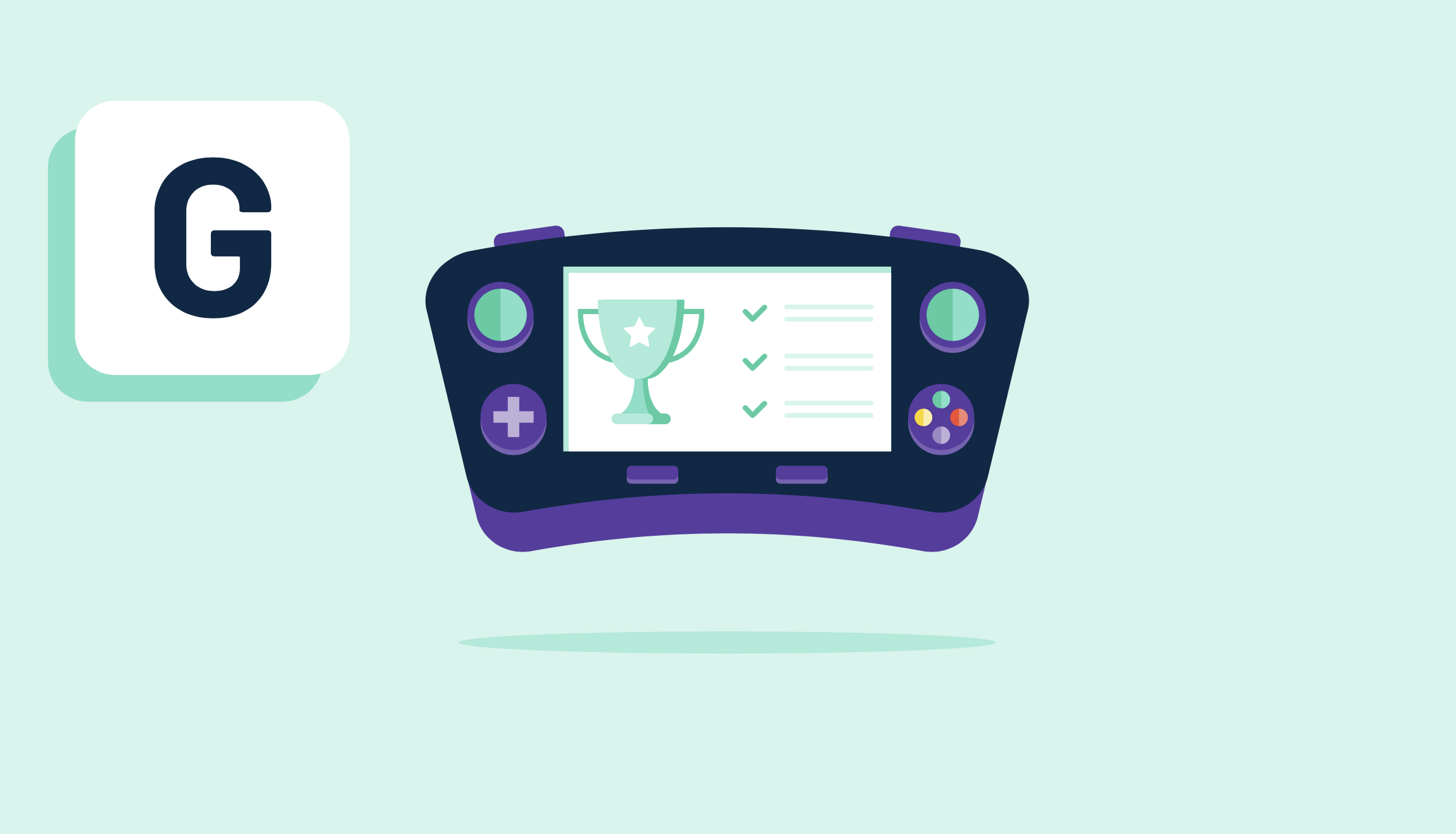
Gamification is the process of using game-style mechanics and elements to incentivize employee engagement. Gamification uses gaming dynamics to provide audiences with tasks to complete with the ultimate goal of receiving a reward. Businesses implement gamification to entice employees and customers to engage in a fun and informal way.
Gamification can be used for different purposes and in different environments, such as sales, marketing, and education. It helps fulfill major company needs like customer participation and brand awareness. The insightful data from gamification is used to modify marketing campaigns, adjust performance goals, and understand market behavior.
Companies use gamification software to automate the creation of these games. Gamification solutions are customizable, and can display private and public leaderboards, track game data, allocate rewards and prizes, and provide game analytics. Gamification platforms can also be integrated with other tools like employee engagement software.
No matter how a company chooses to approach gamification, it will reap the benefits of diversifying how they share information. The list below shows exactly what gamification can help a company do.
Game mechanics are the fundamental elements used to gamify information. They set the foundation for how the game will operate, what needs to be done to prepare the game beforehand, and why users will want to play. Not all gamification examples will include every game mechanic, but incorporating more will ensure that the game remains interactive and worthwhile.
Mechanics used to build a gamification strategy:
There are two different ways to approach gamification. However, both of these gamification techniques are very efficient and offer information in a unique way using game mechanics.
Structural gamification applies game elements to entice the user to move through information quickly while earning rewards along the way. In this type of gamification, the actual content isn’t manipulated, and the gaming mechanics are simply built around the main information being learned. The content and gameplay never intertwine and are created separately.
An example of structural gamification is a progress bar at the front of a classroom that indicates when students complete the week’s classwork quickly and efficiently, working toward the ultimate reward of a pizza party.
Structural gamification elements:
Content gamification applies game elements directly to the information itself. This is done by making the content more interactive and visually stimulating. It requires a bit more effort than structural gamification because extensive creativity is needed to make the information interesting and playable.
Content gamification relies on storytelling and challenges to add the gaming element. An example of content gamification is adding a mascot or animation to a presentation that narrates the slides and quizzes the audience along the way.
Content gamification elements:
Gamification can be implemented in many ways to capture an audience's attention and share information in new and fun ways. It’s most popular among corporations, educational institutions, and e-learning spaces.
Gamification has many different uses in organizations alone. Businesses use it to engage their employees and customers to process information that is otherwise difficult to soak in.
Companies incorporate elements of gamification into:
Creating a gamification strategy is not easy. The line between gamification that works and gamification that doesn’t is very thin. The best practices below highlight things companies should keep in mind as they develop a successful gamification approach.
Alexandra Vazquez is a former Senior Content Marketing Specialist at G2. She received her Business Administration degree from Florida International University and is a published playwright. Alexandra's expertise lies in copywriting for the G2 Tea newsletter, interviewing experts in the Industry Insights blog and video series, and leading our internal thought leadership blog series, G2 Voices. In her spare time, she enjoys collecting board games, playing karaoke, and watching trashy reality TV.
What is planning poker? Planning poker is a collaborative estimation method teams use to...
 by Kelly Fiorini
by Kelly Fiorini
What is rich media? Rich media is a term for digital advertisements that use complex elements...
 by Alexandra Vazquez
by Alexandra Vazquez
What is financial risk management? Financial risk management is the processing of...
 by Alexandra Vazquez
by Alexandra Vazquez
What is planning poker? Planning poker is a collaborative estimation method teams use to...
 by Kelly Fiorini
by Kelly Fiorini
What is rich media? Rich media is a term for digital advertisements that use complex elements...
 by Alexandra Vazquez
by Alexandra Vazquez


